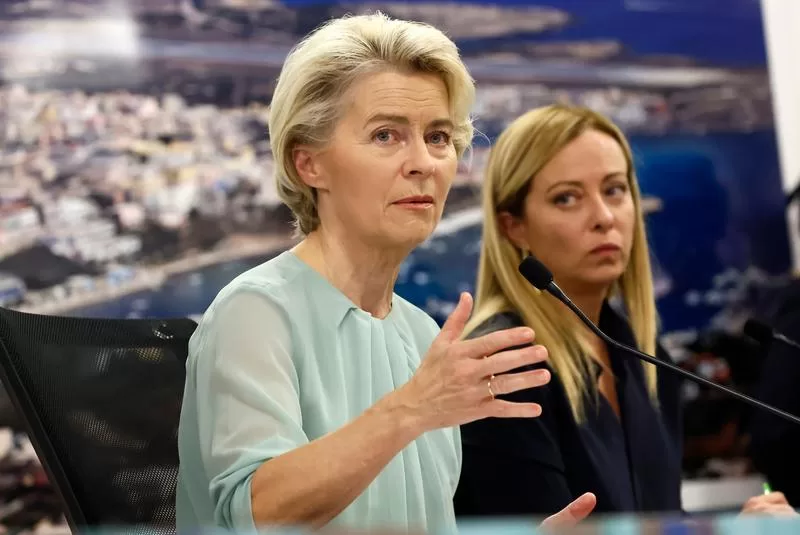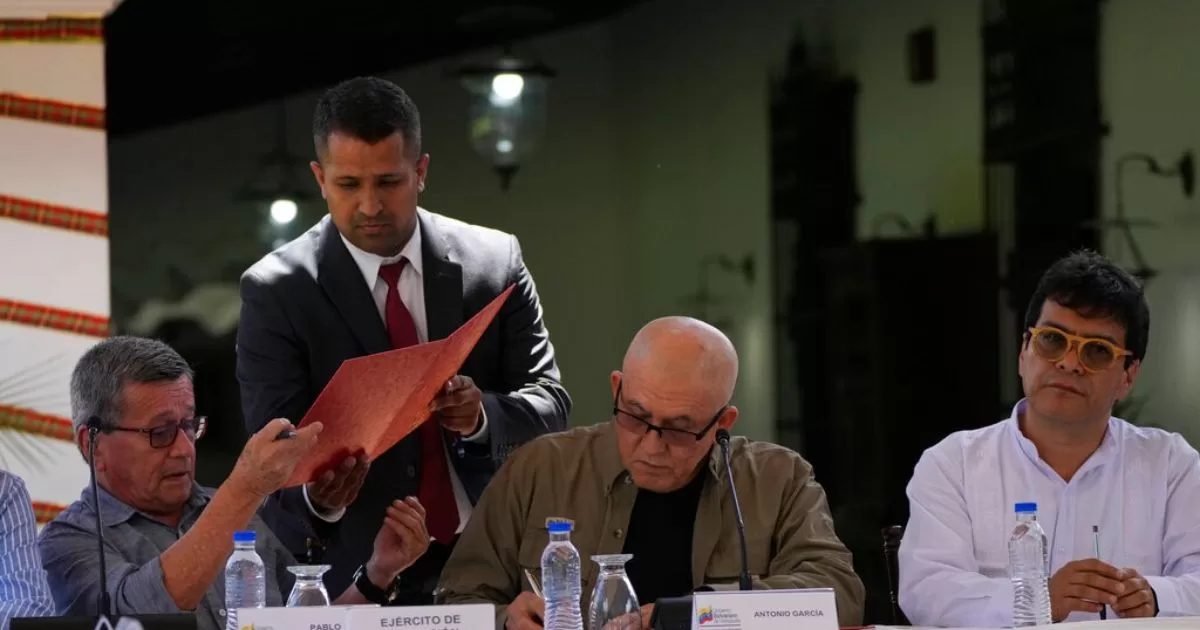The president of the European Commission, Ursula von der Leyen, presented on Sunday on the Mediterranean island of Lampedusa an emergency plan to help Italy manage the record arrival of migrants on its territory, reports AFP.
Ursula von der Leyen with Georgia MeloniPhoto: Cecilia Fabiano/LaPresse ceciliafabiano / Shutterstock Editorial / Profimedia
In Lampedusa, Von der Leyen detailed a 10-point aid plan aimed at managing the current situation, better distributing asylum seekers between European countries and preventing a repeat of episodes of mass arrivals that put a significant strain on capacities logistics and administrative of the peninsula.
BREAKING:
Von der Leyen presents the EU’s 10-point plan for Lampedusa.
No EU naval blockade coming. Italy will have to go at it alone…
1. Reinforce support for Italy by Frontex to manage the high number of migrants to ensure registration of arrivals, fingerprinting,… pic.twitter.com/My0M30EptO
— Visegrád 24 (@visegrad24) September 17, 2023
It should combine firmness against traffickers and facilitating legal entry routes into the European space for eligible asylum applicants.
Brussels first plans to step up assistance to Italy from the European Union’s Asylum Agency and the EU’s border and coast guard agency, Frontex, to ensure migrant registration, fingerprinting, interviews, etc.
It is very important for me to be in Lampedusa today.
I’m here to offer a coordinated response by the Italian and European authorities.
I would like to present to you a 10 point action plan ↓ https://t.co/p1KorMPEh4
— Ursula von der Leyen (@vonderleyen) September 17, 2023
Frontex and other agencies will also have to step up monitoring of the seas and “study options for expanding its naval missions in the Mediterranean”.
The commission wants to facilitate the transfer of people arriving in Lampedusa – who are usually taken by boat to Sicily or the mainland – including to other European countries.
“Irregular immigration is a European challenge that requires a European response,” von der Leyen insisted in Lampedusa.
“We urge the other member states to use the voluntary solidarity mechanism,” she said, without mentioning Germany, which recently decided to stop accepting migrants arriving in Italy.
The plan also intends to improve dialogue with the main emigration countries on this route with a view to readmitting their citizens who do not meet the conditions for asylum, notably Guinea, Côte d’Ivoire, Senegal and Burkina Faso.
The plan also provides for agreements with countries of origin and transit to reduce the number of departures, especially Tunisia where the vast majority of people arriving in Lampedusa board.
The EU signed a partnership with Tunisia in July aimed at reducing migrant arrivals on Italian shores in return for financial aid.
Von der Leyen estimated on Sunday that the EU should accelerate the payment of this aid to Tunisia, and Meloni raised the possibility of European aid to help the country complete its budget, even if the International Monetary Fund conditions the granting of a loan of 1.9 billion of dollars to adopt reforms that Tunisian President Kais Saied rejects.
Finally, the commission wants to “increase awareness and communication campaigns to discourage Mediterranean crossings,” while “continuing to work to provide alternatives such as humanitarian admission and legal channels” of immigration.
According to figures from the Interior Ministry in Rome, around 127,200 people arrived in Italy by boat from the beginning of the year to September 15. The figure was around 66,200 in the same period last year.
Almost 7,000 migrants have arrived in Lampedusa this week, more than the island’s permanent population.
Italian Prime Minister Giorgia Meloni called on Friday for the European Union to act together “with a naval mission, if necessary” to prevent migrants from crossing the Mediterranean from North Africa.
Read also:
Newborn baby found dead on migrant boat off Lampedusa





